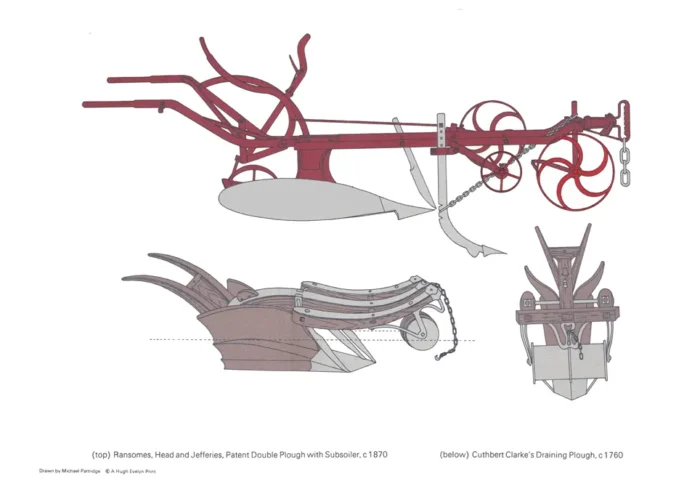Ransomes, Head and Jefferies, Patent Double Plough with Subsoiler c.1870 and
Cuthbert Clarke’s Draining Plough c. 1760
Original price was: £20.00.£15.00Current price is: £15.00.
Early Agricultural Machinery 1700-1920
In stock
- Satisfaction Guaranteed
- No Hassle Refunds (see Shipping and returns)
- Secure Payments
Description
The1730 so-called Rotherham Plough (a plough that originated in Holland but was first used in Britain near Rotherham) was the start of a series of developments that eventually led to the sophistication embraced in this Ransomes implement. Thanks in large part to the work of James Small of Berwick in 1763 or 1764 who developed the modern mouldboard and just two years after the formation of John Deere (which evolved from the Moline Company at Moline, Illinois), Messrs Head and Jefferies developed this double plough with Subsoiler. Ransomes merged with Head and Jefferies two years later. Wet land cannot be cultivated successfully. The Romans and later the Celts and Anglo-Saxons brought some parts of Britain under cultivation with open and covered drains, but these tended to be of limited lifespan. During the 1760’s a Mr Knowles and a Mr Cuthbert Clarke were both awarded prizes by The Society of Arts in London, indeed in 1766 Mr Clarke was awarded a premium by the Society. Clarke’s plough was built of heavy wooden beams which carried a divided roller at the front to prevent the coulters from penetrating too deeply. But the implement was too heavy to work properly. It was James Smith of Deanston in Scotland who developed the first successful subsoiling mole plough.
Additional information
| Weight | 0.0118 kg |
|---|---|
| Dimensions | 5 × 24.5 cm |

 One Row Seed Drill, c. 1900
One Row Seed Drill, c. 1900 


